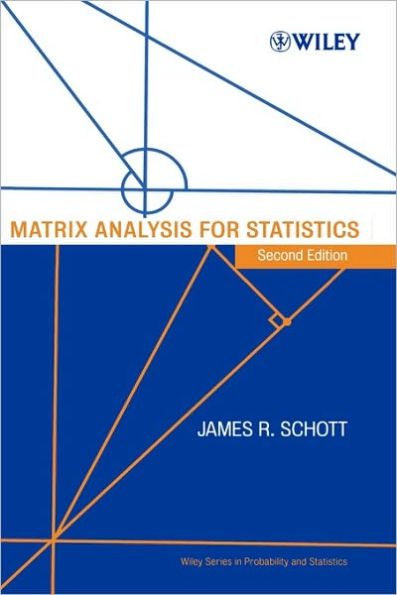A complete, self-contained introduction to matrix analysis theory and practice
Matrix methods have evolved from a tool for expressing statistical problems to an indispensable part of the development, understanding, and use of various types of complex statistical analyses. This evolution has made matrix methods a vital part of statistical education. Traditionally, matrix methods are taught in courses on everything from regression analysis to stochastic processes, thus creating a fractured view of the topic. This updated second edition of Matrix Analysis for Statistics offers readers a unique, unified view of matrix analysis theory and methods.
Matrix Analysis for Statistics, Second Edition provides in-depth, step-by-step coverage of the most common matrix methods now used in statistical applications, including eigenvalues and eigenvectors; the Moore-Penrose inverse; matrix differentiation; the distribution of quadratic forms; and more. The subject matter is presented in a theorem/proof format, allowing for a smooth transition from one topic to another. Proofs are easy to follow, and the author carefully justifies every step. Accessible even for readers with a cursory background in statistics, yet rigorous enough for students in statistics, this new edition is the ideal introduction to matrix analysis theory and practice.
The book features:
- Self-contained chapters, which allow readers to select individual topics or use the reference sequentially
- Extensive examples and chapter-end practice exercises, many of which involve the use of matrix methods in statistical analyses
- New material on elliptical distributions and new expanded coverage of such topics as eigenvalue inequalities and matrices partitioned in 2 by 2 form, in particular, results relating the rank, generalized inverse, eigenvalues of such matrices to their submatrices, and much more
- Optional sections for mathematically advanced readers
A complete, self-contained introduction to matrix analysis theory and practice
Matrix methods have evolved from a tool for expressing statistical problems to an indispensable part of the development, understanding, and use of various types of complex statistical analyses. This evolution has made matrix methods a vital part of statistical education. Traditionally, matrix methods are taught in courses on everything from regression analysis to stochastic processes, thus creating a fractured view of the topic. This updated second edition of Matrix Analysis for Statistics offers readers a unique, unified view of matrix analysis theory and methods.
Matrix Analysis for Statistics, Second Edition provides in-depth, step-by-step coverage of the most common matrix methods now used in statistical applications, including eigenvalues and eigenvectors; the Moore-Penrose inverse; matrix differentiation; the distribution of quadratic forms; and more. The subject matter is presented in a theorem/proof format, allowing for a smooth transition from one topic to another. Proofs are easy to follow, and the author carefully justifies every step. Accessible even for readers with a cursory background in statistics, yet rigorous enough for students in statistics, this new edition is the ideal introduction to matrix analysis theory and practice.
The book features:
- Self-contained chapters, which allow readers to select individual topics or use the reference sequentially
- Extensive examples and chapter-end practice exercises, many of which involve the use of matrix methods in statistical analyses
- New material on elliptical distributions and new expanded coverage of such topics as eigenvalue inequalities and matrices partitioned in 2 by 2 form, in particular, results relating the rank, generalized inverse, eigenvalues of such matrices to their submatrices, and much more
- Optional sections for mathematically advanced readers

Matrix Analysis for Statistics
480
Matrix Analysis for Statistics
480Hardcover(REV)

Product Details
| ISBN-13: | 9780471669838 |
|---|---|
| Publisher: | Wiley |
| Publication date: | 01/12/2005 |
| Series: | Wiley Series in Probability and Statistics Series , #530 |
| Edition description: | REV |
| Pages: | 480 |
| Product dimensions: | 6.34(w) x 9.49(h) x 1.11(d) |
